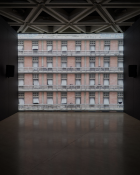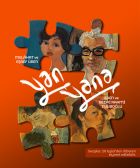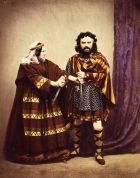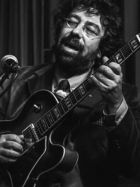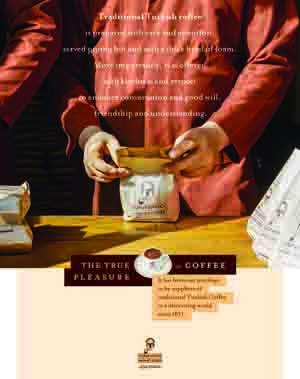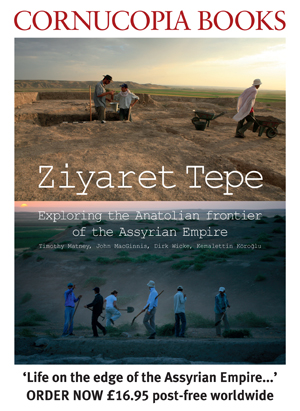The first of the Istanbul Recitals for the 2018-2019 season was given by the brothers Lucas and Arthur Jussen at The Seed in Emirgan on October 3. It was, first of all, a pleasure to revisit this attractive venue. The wide terrace overlooking the Bosphorus is still there, and – to my immense relief the complex had not been sold off during the summer to make way for five high-rises and a state-of-the-art, artificial-intelligence-driven Business Centre.
The Dutch piano duo were in fine form and demonstrated not only consummate musicianship but also fantastic feats of memory. I gave a run-down on the brothers from Hilversum in my blog Musical Shares, touching on their trips to Portugal and Brazil to be coached by the celebrated Portuguese virtuoso Maria João Pires. I do not know precisely what she taught them: what is certain is that someone somewhere along the line has endowed them with excellent taste to complement their quite uncanny ability to coordinate with each other. Not only can they come in at exactly the same moment after a long pause (though I saw Arthur nod to Lucas on some occasions to indicate that the time had come to leap off the springboard), but they can play high-speed trills simultaneously in perfect synch.
The Jussens began by addressing the audience with a “Merhaba!”, and proceeded to say how much they liked Turkey and admired Turkish music. My usual reaction to statements like this from visiting artists is a cynical “Oh, yeah?”. However, the fact that they once wrote to Fazıl Say to ask him to compose a piece for them – a request that was accepted – does argue for a certain level of interest and commitment.
The first item on the programme was Beethoven’s Eight Variations on a Theme by Count Waldstein for Piano (4 Hands). This is the first of Beethoven’s compositions for piano duet, and is thought to have been written either just before or just after he left Bonn to seek his fortune in Vienna in 1792. The Waldstein in the title is Count Ferdinand von Waldstein, after whom the Piano Sonata No 21 in C major is nicknamed. The theme itself is somewhat bland, but Beethoven’s variations succeed in imparting some sparkle and contrasts of colour. The finale has a nice throw-away ending, too.
Next up was Schubert’s Fantasie in F minor, a gorgeous piece that allowed the brothers to give free rein to their sensitivity. I doubt if I will ever hear a better performance. The Fantasie was written between January and April 1828, a few months before the composer’s death. It is dedicated to Karoline Esterhazy, with whom he had spent many hours playing duets during his time as her piano teacher. The four movements flow seamlessly into each other in a kind of extended sonata form, and the final iteration of the haunting theme comes as a heart-stopping reminder of mortality: Franz! Your time is up! The following video appeared in my ‘sneak peek’ blog on the season’s Istanbul Recitals, but here it is again:
The Jussen brothers’ next offering, Francis Poulenc’s short, three-movement Sonata for Piano (4 Hands), is an early work dating from 1918. Although he called it a sonata, Poulenc did not supply a development section to any of the movements, preferring instead to showcase his talent for brittle, Stravinskyesque exuberance-with-edge coupled with a melodic simplicity reminiscent of Satie. Although I have been unable to find a video of a performance by Lucas and Arthur of the complete work, one exists of them playing the third movement:
And now, the full sonata played in Brussels by the Pianoduo Mephisto (Katrijn Simoens and John Gevaert). I just love that piquant final chord:
The first half of the programme concluded with the piece Fazıl Say wrote especially for them, entitled Night. It went down splendidly with the audience in Emirgan. The first of the following two videos is the one with the dramatic camerawork that appeared in my overview of the season’s Istanbul Recitals, while the second shows a performance of the piece in a bar (of all places), preceded by an introduction from a cyclist (of all people). Unfortunately, I do not speak Dutch, so I cannot tell you what he is saying – though the Turkish subtitles might help some readers. When the music is over, he converses with the brothers:
After the interval, Lucas and Arthur launched into the piano duo version of Igor Stravinsky’s music for the ballet Le Sacré du printemps: tableaux de la Russie païenne en deux parties (The Rite of Spring: Pictures from Pagan Russia in Two Parts). How they managed to memorise all 32 minutes of this early-20th-century masterpiece, with its complex semi-atonal chords and fearsomely frequent changes of time signature, I have no idea. It must have taken months, if not years.
The première of this feisty flagship of modernist iconoclasm (adjectives often used to describe it are “violent”, “brutal”, “pitiless” and “savage”) at the Théâtre des Champs-Elysées in Paris on May 29, 1913, is famous for having all but caused a riot. Stravinsky himself said: “When the curtain opened on the group of knock-kneed and long-braided Lolitas jumping up and down, the storm broke.” People in the audience shouted and threw things, refusing to be pacified by exhortations to be quiet and “show some respect’” on the part of Debussy and Ravel, both of whom were present. The argument that broke out between the defenders and detractors of the ballet and its atavistic accompanying music raged back and forth with such vehemence – and, in some cases, physical violence – that the dancers could not hear the orchestra, and missed their cues. Stravinsky retreated to the wings, where he is said by some to have cowered behind Vaslav Nijinsky (who was bellowing instructions to the dancers, trying to make himself heard above the din). As with The Firebird (1910) and Petrushka (1911), Stravinsky had been commissioned to write The Rite of Spring for the Ballets Russes by the impresario Serge Diaghilev. The choreography was by Nijinsky, while the story was developed by the composer in conjunction with Nicholas Roerich, who also designed the sets and costumes (see footnote below).
The Jussens successfully brought out all the drama in Stravinsky’s score – which, with its jerky, obsessive rhythms, can only have been intended to shock and scandalise. Afterwards, one of the brothers apologised for having strained our powers of concentration, saying that The Rite was a work audiences found “difficult to listen to”. I disagree. Aside from the aesthetic qualities of the music – which no longer seems anything like so outlandish as it did in 1913 – the sheer brilliance of the pianism and the feat of memorisation involved made the performance a spectacular achievement.
Here is a link to the four-hands piano version of The Rite of Spring (in the arrangement by the composer himself, accompanied by the score), followed by one to the ballet itself, performed at the Théâtre des Champs-Elysées with full orchestral accompaniment:
Lucas and Arthur Jussen provided an excellent send-off for the new season’s Istanbul Recitals. The performers seemed to enjoy it, too, and many thanks to the organisers for inviting them. Next to grace the stage at ‘The Seed’ will be the French pianist Alexandre Tharaud on November 13.
A FOOTNOTE ON NICHOLAS ROERICH
As with The Firebird (1910) and Petrushka (1911), Stravinsky had been commissioned to write The Rite of Spring for the Ballets Russes by the impresario Serge Diaghilev. The choreography was by Nijinsky, while the story was developed by the composer in conjunction with Nicholas Roerich, who also designed the sets and costumes.
The artist, writer, archaeologist and philosopher Nicholas Roerich and his wife Helena were very interesting people who had their fingers in several pies, two of these being yoga and Theosophical mysticism. I once visited the home they made for themselves at Naggar in the Kulu Valley, which leads up from the Indian state of Himachal Pradesh towards high passes that end in Tibet. On show at their house on the mountainside are Nicholas Roerich’s automobile (I wonder how it managed to get up the steep hill from Patlikuhl in the valley bottom?) and a large number of his atmospheric paintings of Himalayan landscapes. The following video gives you a guided tour:
At the end of The Rite of Spring, a girl dances herself to death in a trance state at the climax of a sacrificial rite – and indeed, Stravinsky claimed to have put himself in a trance to compose the music: “I had only my ear to help me,” he said. “I heard and I wrote what I heard. I am the vessel through which The Rite passed”. This sounds remarkably like an echo of the Roerichs’ transcendental leanings. Here are three links – the first to a biography of Nicholas, the second and third to selections of his paintings:
https://russiapedia.rt.com/prominent-russians/art/nicholas-roerich/
https://www.wikiart.org/en/nicholas-roerich/mount-of-five-treasures-two-worlds-1933


